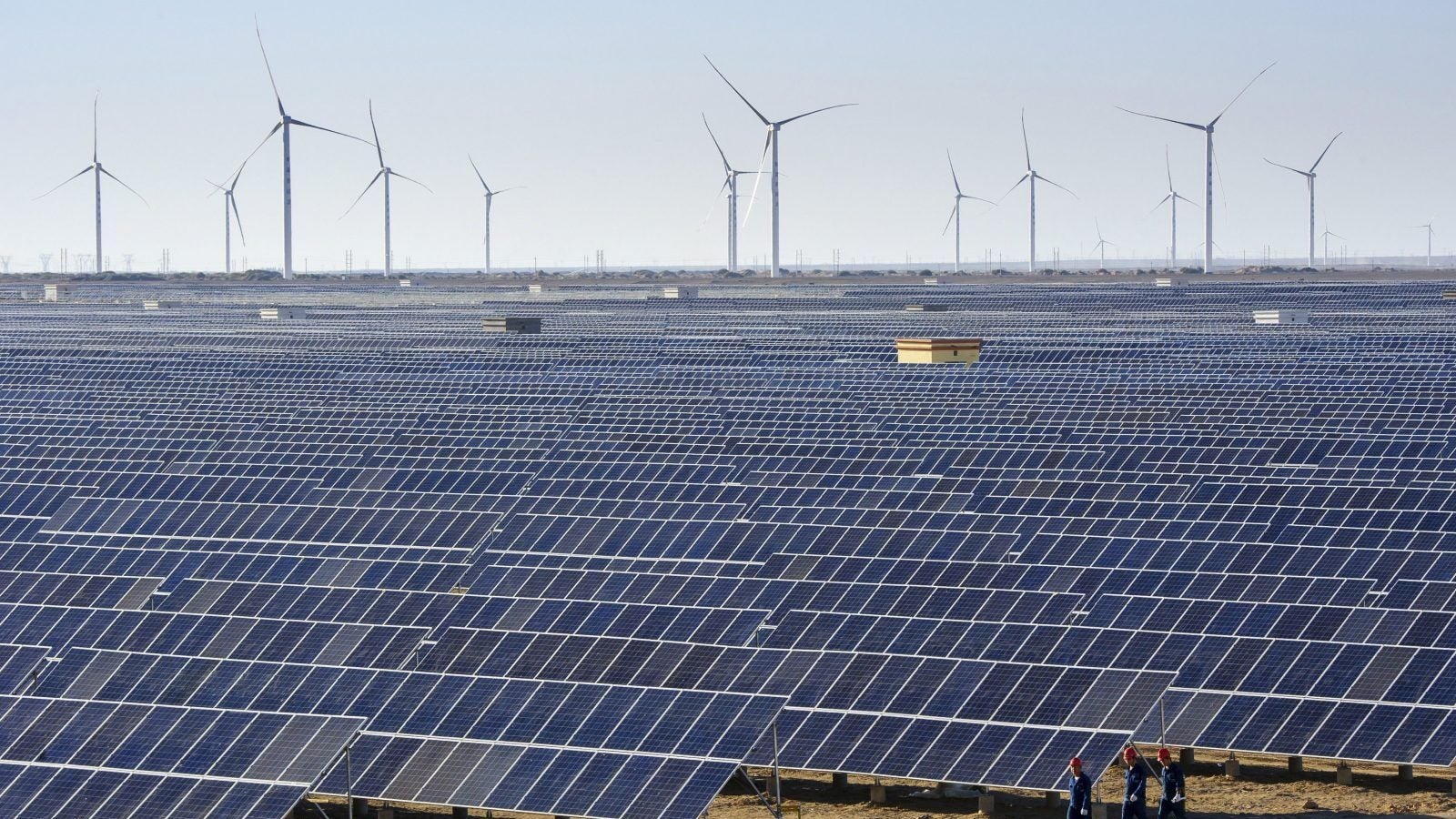India wants to maximise renewables production with solar-wind-hybrid plants
The Indian government has given the country’s booming renewable energy sector a boost. On May 14, the ministry of new and renewable energy released a draft policy for setting up wind-solar-hybrid plants—where both windmills and solar panels are put up on the same piece of land.


The Indian government has given the country’s booming renewable energy sector a boost. On May 14, the ministry of new and renewable energy released a draft policy for setting up wind-solar-hybrid plants—where both windmills and solar panels are put up on the same piece of land.
One of the major drawbacks of both wind and solar farms today is that power is produced only during certain intervals—when the sun shines during the day, or when there are strong enough winds, typically during the evening. A hybrid project reduces this variation and power can be generated from a plant nearly round the clock.
“It is a great combination because then you have steady power coming from six in the morning to six in the evening from the solar, and then have wind which starts around 12 and goes on till about two or three in the morning,” said Ramesh Kymal, CEO of wind turbine maker Siemens Gamesa’s India business.
Hybrid plants also allow power producers to tap into multiple energy sources simultaneously, and generate more power from a given site. ”A new market is emerging… to capitalise on the synergies (of wind and solar power plants across India). Hybrid has become a very important factor in the way forward,” Kymal added.
And this push towards hybrids has come just as the wind energy and solar power sectors in India are stabilising after a rough year battling policy changes and regulatory issues, even as the country targets renewable energy capacity of 175,000 megawatts (MW) by 2022, up from around 70,000 MW currently.
Fertile land
India is an ideal market for hybrid projects, experts say, given that most states are rich in both wind and solar energy resources. States such as Gujarat, Tamil Nadu, Maharashtra, Karnataka, and Andhra Pradesh have large capacities of both wind and solar power projects.
Moreover, hybrid projects allow power producers to make better use of the land and the electricity transmission infrastructure.
Typically, these two components make up around 25% of the cost of a renewable energy plant. With hybrid projects, both the wind and solar components will feed power into the same transmission lines, allowing companies to put up nearly twice as much capacity on each site and earn better returns on their investments.
India’s transmission infrastructure currently isn’t sufficient to handle the increase in clean energy capacity, and hybrid projects will help use existing grids efficiently. “Going forward, the grid is going to be a challenge (in India) so hybrid is the best considering the grid bottleneck. That makes more economical use of your (electricity transmission) facility,” said Ankur Agarwal, a senior analyst with India Ratings and Research.
While a few companies had experimented with hybrid projects a few years ago, the sector is now gaining momentum. In April, New Delhi-based renewable power producer Hero Future Energies commissioned a 50 MW pilot project in Karnataka, where it put up solar panels on an existing wind farm. In January, the central government-run Solar Energy Corporation of India (SECI) called for expressions of interest from renewable power companies to set up a 160 MW wind-solar hybrid plant in Andhra Pradesh.
Early days
For the next couple of years though, the country will only see small-scale hybrid plants or projects where companies will convert their wind or solar farms into hybrid ones, analysts say. This is because Indian companies still need to manage the technical issues involved in integrating the two different energy sources.
“It is not just putting two power plants together and making it one,” Agarwal said. “People have to figure out technical feasibility, integration between the two. Systems (are required) to manage the load coming from both wind and solar.”
Moreover, hybrid projects require battery systems to store wind and solar power, and synchronise the two. Energy storage technology is still expensive in India and globally, and will add to costs until the storage market develops in India.